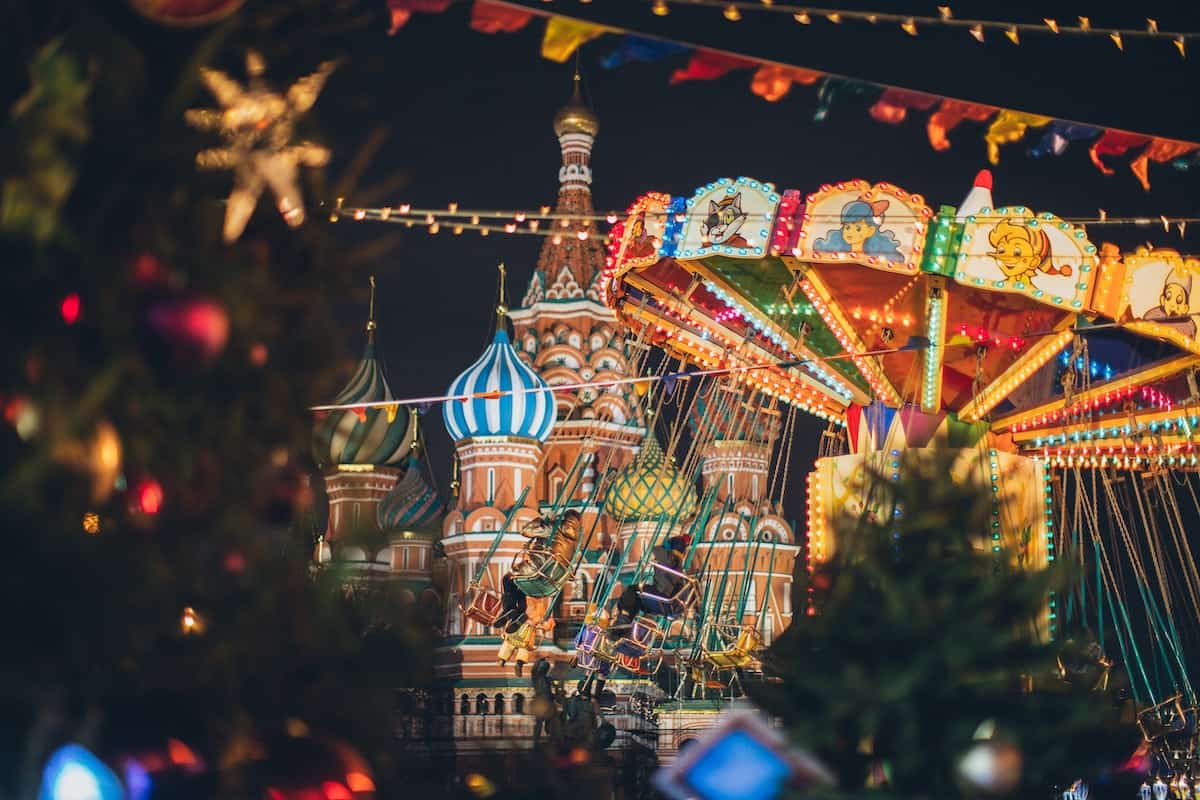Tourism is a complex phenomenon that wouldn’t exist without the key nine pillars that support its sustainability. Every time you travel you are relying on at least one of these nine components of tourism. If you are interested in finding out what these are in detail then this is the content for you.
The nine pillars of tourism are the nine key elements without which organized travel wouldn’t exist as we know it. They are the foundation of tourism and key sectors that support the industry. These are the 9 pillars of tourism:
- Accommodation
- Adventure and recreation
- Attractions
- Catering facilities
- Entertainment
- Events
- Transportation
- Travel agencies & Tourism Services
- Tourism planning and development
If you are curious about understanding what makes these nine segments function as a synchronized system, and what makes each so important, keep on reading. This is what you need to know.
What Are The Nine Pillars of Tourism and Why Are They Important?
Pillars of tourism are the base or the essential operating sectors that support tourism as a social phenomenon. While they can function as separate systems, each of the nine is closely entwined and dependent on one another. They are important not only as a part of the greater whole (tourism) but as individual sectors.
This is because each pillar includes a specific set of services that are necessary to support that individual pillar. Understanding them is essential for understanding how tourism functions as a whole and how it can be improved to better suit both the travelers and the organizations that profit from it.
These are pillars of tourism explained in details:
Accommodation
Accommodation is meant to ensure comfort and a place to rest and sleep when traveling. As a pillar of tourism, it enhances comfort while traveling, offering travelers space to relax and recuperate.
This pillar is meant to make the stay in a certain location more pleasant, by offering beds, bedding, and facilities, to make travelers feel at home even when they are far from home.
Unlike staying with a friend or a family, the accommodation sector is organized and includes registered and verified options for those looking for rooms. This involves various types of accommodation, such as hotels, hostels, resorts, cabins, themed accommodation, etc.
Besides offering a place to stay, most of the time accommodation also includes additional hospitality services, including food, some transport services, or organized sightseeing and entertainment. The additional services and perks will depend on the type of accommodation.
Attractions
Attractions are what draw travelers in. This segment of tourism is what gives the novelty, the excitement, and what increases the value of a touristic spot in visitors’ eyes. Attractions are all about new, but locally authentic experiences, as they are usually one of a kind and can’t be seen elsewhere. They have great impotence in terms of general knowledge, history, and art and can broaden horizons.
In its nutshell, the attraction sector encompasses places of cultural and historical significance, such as museums, galleries, monuments, historical sites, architectural masterpieces, and other landmarks. The attractions can also be found in nature, and visitors can be equally drawn to them because of their beauty. These are natural reserves, national parks, mountains, lakes, rivers, and natural wonders.
Adventure & Recreation
The adventure and recreation sector is closely entwined with the attractions sector, particularly with natural attraction sites such as mountains or lakes. However, it includes activities that are, in a way, attractions in their own right. Just like some travelers travel with a motivation to see cultural and historic hotspots, some travel for the purpose of exploring the wilderness, hiking, or trekking.
Adventure and recreation pillar refer to authentic activities that people are looking to try when traveling. This is a pillar of tourism that refers to active vacationing and includes everything from organizing and guiding such trips, ensuring safety and accessibility to recreational spots, to micromanaging recreational activities.
The main purpose of it is to give adventurers a chance to connect with nature, get physically active and get creative with their vacation. Exiting outdoors experiences, such as kayaking, extreme sports, cycling, mount biking, and safari all fall under this category.
Catering facilities
Food and beverages are the essential elements of every trip. The catering segment of tourism is there not only to ensure that travelers are full and content by providing food and drinks. It is organized to enrich the travel experience with various specialties, and traditional, and modern local dishes and beverages. All of that with professionalism typical for the hospitality industry.
Restaurants, cafes and bars, catering services, bakeries, spots for fine dining, and specialized food shops all fall into this category. Furthermore, food & beverage as a pillar of tourism can be both an accompanying segment of travel or one of the primary motives, as many enjoy the perks of food tourism. For some travelers, food is just a necessity, while for others, food is an important part of the experience. Either way, the value of proper nutrition and satisfying catering service in tourism is undeniable.
Entertainment
While the recreation and adventure sector focuses on active vacationing, the entertainment sector focuses on more passive or laid-back activities. It covers experiences that are geared towards amusement, relaxation, and pure enjoyment in order to maximize pleasure and eliminate stress.
Entertainment and relaxation can involve self-care activities, such as spas and healing, but also cinemas, theaters, and city cruises. The sector is not only limited to indoor experiences, and can also include outdoor entertainment venues, like water parks, amusement and theme parks, open-air projections, etc. In a way, the entertainment pillar is also supported by the fashion, retail, and gambling industries (think Las Vegas). The ultimate goal is always to raise satisfaction, enjoyment, and comfort levels.
Events
While it may seem that the events sector is more of supporting industry, rather than a pillar of tourism itself, it holds incredible value in increasing the number of visitors per year. Similar to the attractions or recreation sector, its main purpose is to provide visitors a reason for visiting and increase the touristic value of a specific region.
Music festivals and events, conferences, tech, movies, sports, gaming, or food festivals are all organized events that attract thousands of tourists and all fall under this category. For instance, travelers on the Winespectator forum suggest a wide range of entertaining summer activities for a trip, such as seeing concerts and traveling during the World Cup – both of which fall under the ‘’events’’ pillar category.
The industry includes a variety of event management activities, such as selecting venues, selling tickets, and offering support to tourists for their stay during the event, by collaborating with other sectors of tourism. This way, because events entice tourists to visit a location, the events sector is supporting all other pillars, such as accommodation or transportation.
Transportation
Travel is any physical movement from place A to place B, using one of the four means of transportation – air, rail, road, or marine transportation. With that being said, transportation is a component of tourism without which travel wouldn’t exist.
The sector of transport ensures that a traveler can safely get to the destination with maximum comfort and efficiency, be that using bus and train networks, the benefits of relying on airlines, cruise ships, and ferries, to trucking and shipping services. As such, its main purpose is to connect people and things with locations, and this applies to both long-distance and short-distance travel. This involves all activities from online and physical access to transportation sites to checking for availability, buying tickets, or booking transportation.
Travel agencies & Tourism Services
While some like to explore the world on their own, many prefer to have their trips organized by specialized agencies. Travel agents and agencies are responsible for a complete travel organization that stretches across all seven previously mentioned pillars. The purpose of this pillar is to connect travelers with their desired destination with as little hustle for travelers as possible. Travelers on Tripadvisor suggest that finding a travel agency that suits your needs can start by reading guidebooks and searching websites. This, too, is a part of the functionality of the sector.
Agencies from the travel sector are not only specialized in organizing travel and offering tourist guidance and assistance prior to and during travel. They also offer useful information about destinations that they are covering. This entails the travel trade that deals with bookings in previously mentioned sectors – booking flights and catering, accommodation, excursions and tours, recreational activities, etc. Additionally, this sector deals with tourism services that are backed up by information centers, and operators – all in order to help visitors get the most out of their trip.
Tourism planning and development
Tourism planning and development is oriented towards making improvements in the industry of tourism. The focus is not on individual travelers and their needs, but more on finding ways to level up traveling experiences as a whole. Through analysis, research and innovation, specialized organizations are looking for ways to level up traveling experience and develop tourism in their region. These changes are funded by governments on national and regional levels. As such, this pillar is mainly concerned about tourism itself and having to offer something to visitors on a larger scale.
There is a continuous investment in research of trends and needs of visitors in order to gather reliable statistics and improve the quality of travel. For that reason, the tourism planning sector has a close association with different pillars of tourism, such as catering, accommodation, or transport, all with one goal – to improve the overall traveling experience and level-up tourism in a specific region. The focus is on finding ways to attract more visitors, expand tourism and invest in it. Tourism marketing, and promotions, too, fall under this category.
Conclusion
The word tourism is a broad term. Splitting it into key fragments, or pillars allows you to better understand what it is composed of and how it functions as a system. Each of the nine has something valuable to offer to an individual tourist, but also to groups and society in general.
Knowing about what each brings offers you a broader perspective about the place tourism has in a larger community and how it operates.
References:
- Tripadvisor: How to find a good travel agent. URL retrieved from: https://www.tripadvisor.com/ShowTopic-g1-i9658-k13156016-How_to_find_a_good_travel_agent-Family_Travel.html
- Winespectator: Summer travel. URL retrieved from: https://forums.winespectator.com/topic/summer-travel




